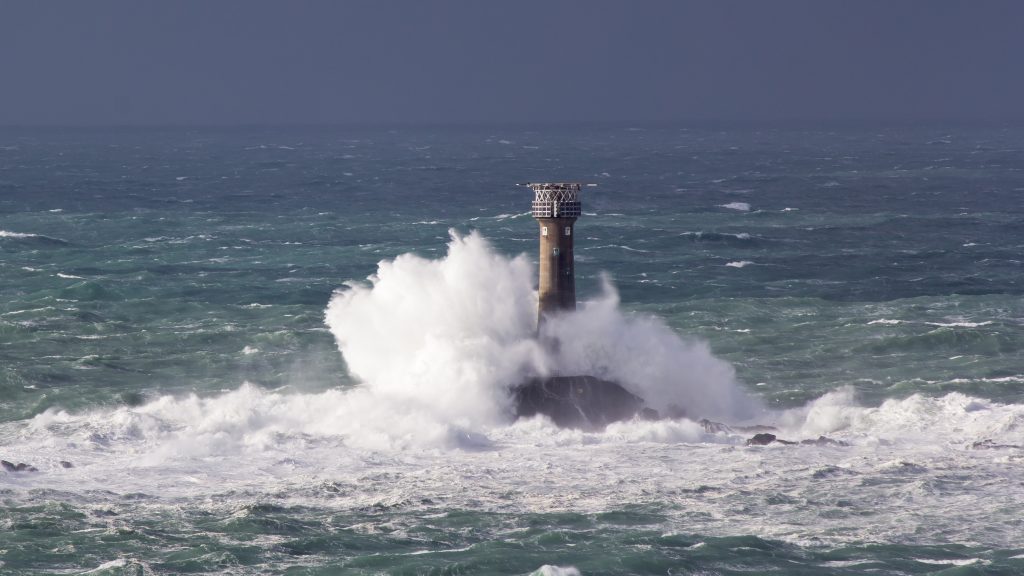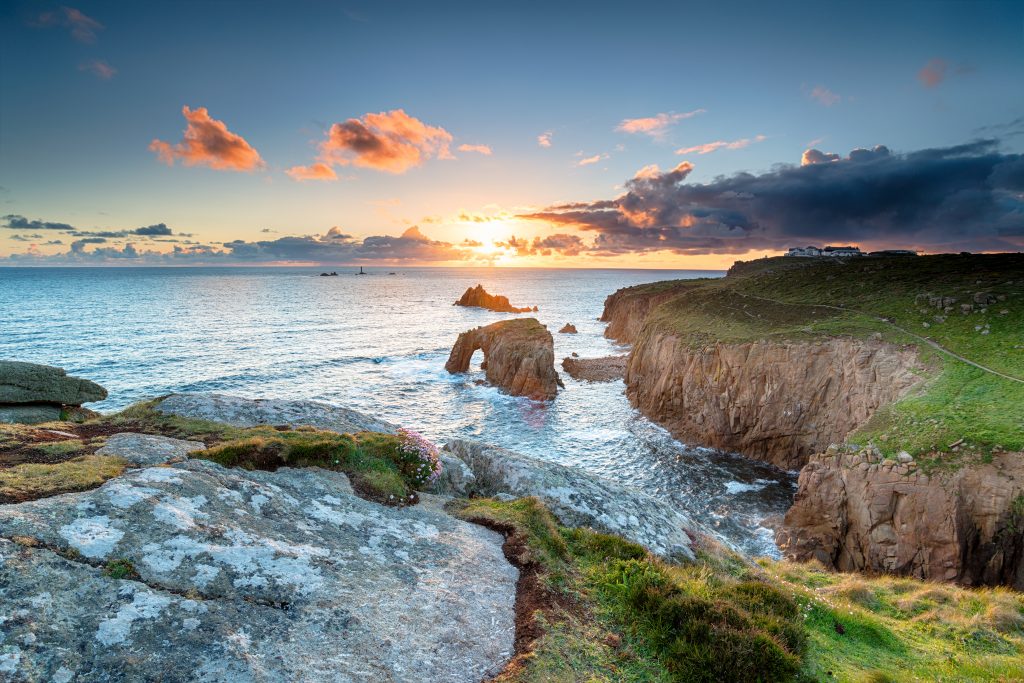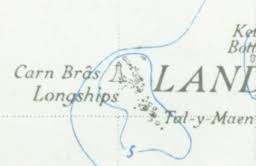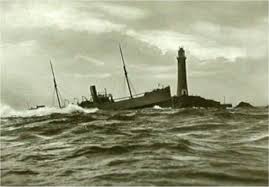THE LONGSHIPS LIGHTHOUSE
Have you ever stood on the cliff top above the majestic Celtic Sea? Have your lips tasted the briny ocean spray? Have you been touched by its rugged beauty and breath-taking views? Close your eyes and allow your imagination to soar.

“However, their westward gaze will, in all probability, be drawn from the distant horizon to focus on a line of rocks barely a mile from where they stand, on top of which rises the shapely symmetry of the Longships lighthouse. It is a scene remembered, and much photographed by every visitor to this outpost of mainland Britain, more vividly perhaps if viewed at sunset, when the rocks and the lighthouse are thrown into silhouette against a flaming sky, to become a lonely convoy of ships that give the reef its name.” © Christopher P. Nicholson
The rocks that make up the Longships reef and their meanings in Cornish.
- Cein (Cornish: Keyn, meaning back, ridge, or keel)
- Farkell Carn (Cornish: Karn Forhel, meaning forked rock-pile)
- Tal-y-maen (Cornish: Tal an Meyn, meaning brow of the stones)
- Carn Bras (Cornish: Karn Bras, meaning big rock-pile)
- Herly (Cornish: Hir Legh, meaning long ledge)
- Plassek (Cornish: Plosek, meaning foul one)
- Meinek (Cornish: Meynek, meaning stony place)

“But now a calm comes down, and lulls the roar,
And soothes the ocean-lion into sleep!
The waves in wrath no longer lash the shore,
Or, like white chargers, sweep:
The sun hangs mellow in the burnished west,
And painted crags reflect his mild farewell;
The sea-mew, landward wheeling, seeks her nest,
And ocean’s organ peels with gentler swell.
Wide-scattering surf is turned to dust of gold,
The Lady-rock is blushing ruby-red,
The little sea-pink, in her craggy hold,
Shuts her blue eye, and bows her sleepy head.
The last rich odours from the heath arise,
Offerings from those wild altars to the skies:
The friendly Longships, from its foam-bound site,
Smiles o’er the surge in that soft tranquil light,
And soon begins to trick its own red ray,
To warn from rocks, and point the seaman’s way.”
© ‘Land’s End’ – by Nicholas Michell
The Longships Lighthouse tower was established in 1795, on Carn Bras, the largest of the Longships Rocks about 1 ¼ miles off the coast of Land’s End in Cornwall, which rose 12m above high tides.

The circular tower, designed by Trinity House architect Samuel Wyatt, had three storeys; the lowest contained water tanks and stores, the next formed a living room and the lighthouse keepers used as a bedroom the top storey under the wood and copper lantern. The lantern was elevated 24m above the sea, and held 18 Argand lamps with reflectors, arranged in two tiers and shining out to sea.

But from the terrific seas which swept over the rock during storms, the lantern was so often obscured by water that the character of a fixed light could not be determined with certainty. This eclipse by the waves was the reason given for the replacement of Wyatt’s tower by the present circular tower of grey granite built by Sir James Douglass, the Trinity House Engineer-in-Chief, in 1875.

Even after these improvements, the S.S. Bluejacket was wrecked on rocks near the lighthouse on a clear night in 1898, nearly demolishing the lighthouse in the process. Often due to bad weather there was a delay in relieving the men and supplying stores. In January 1901 there was some concern that the men had run short of provisions due to the severe weather. It was found that there was plenty of stores and the only hardship was their lack of tobacco.

In 1967 the light was modernised: an electric bulb replaced the old paraffin burner and at the same time a new revolving optic was installed displaying an isophase light visible up to 19 nautical miles distant. At the same time the explosive fog signal (in use since the 1890s) was replaced with a more modern fog horn.
Next Week ~The Seven Stones Reef and The Lost Land of Lyonesse
__________________________________________________________________
- Sources
- Trinity House, U.K.
- Wikipedia Longships Lighthouse
- London in Light and Darkness – Nicholas Michell
- Rock Lighthouses of Britain: The End of an Era? By Christopher P. Nicholson





2 Responses to THE LIGHTHOUSE ON CARN BRAS